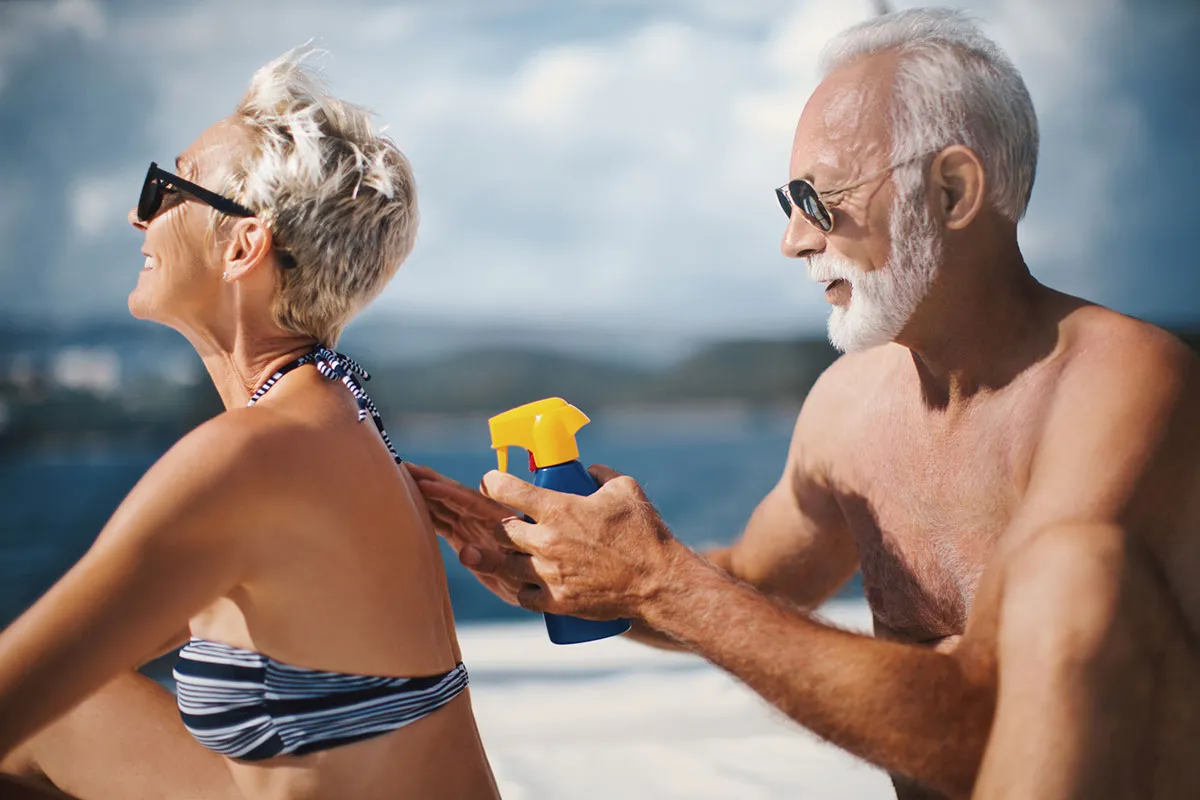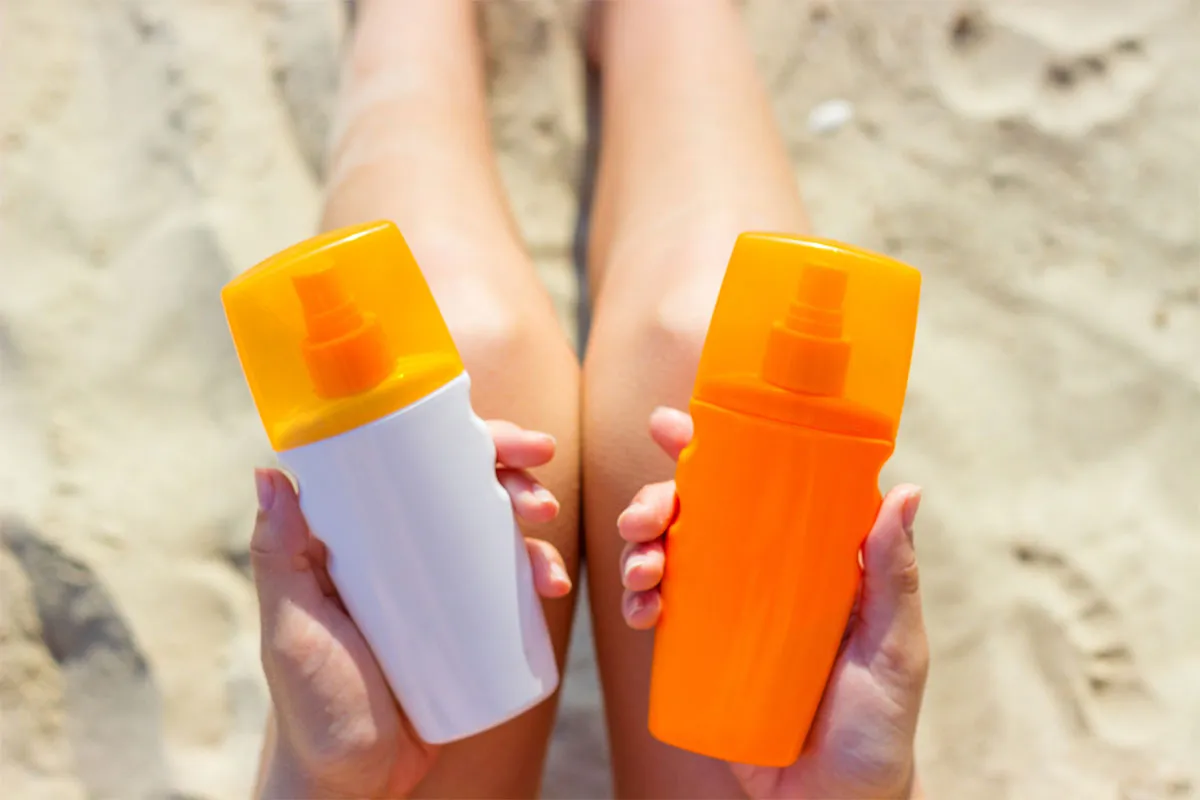Summer is here, and much of the UK is feeling the heat. As temperatures rise, more and more of us head outside for barbecues, picnics and sunbathing. However, anyone who's turned lobster-red after a few hours outdoors will know that suncream is essential, even in the UK.
But which suncream should you choose? Cream, spray-on or roll-on? Chemical or mineral? And can you get away with a moisturiser with SPF?
What should I look for on the bottle?
The first thing to look for is the Sun Protection Factor, or SPF. This measures how much the suncream will protect you against UVB, the higher-energy, shorter wavelengths of the Sun's UV light.
"SPFs are rated on a scale of 2 to 50+," says Prof Brian Diffey of the British Association of Dermatologists. "We recommend an SPF of 30 or more as a satisfactory form of sun protection."
In addition to SPF, make sure the suncream also displays a star rating. This is a measure of its protection against UVA, which is the lower-energy, longer-wavelength type of UV light. However, a high star rating isn't enough: this only measures how much UVA the suncream blocks in comparison to UVB, so a high star rating and low SPF is still low protection overall.
"A sunscreen with an SPF of 30 and a UVA rating of 4 or 5 stars is generally considered as a good standard of sun protection, in addition to shade and clothing," says Diffey.
Is there any difference between spray, lotion, cream, stick or roll-on suncreams?

"As long as the suncream offers SPF of 30 or above, is applied in sufficient quantities and reapplied every two hours or so if the user has been in water or sweating heavily, there should not be any substantial difference in the level of protection offered by different sunscreens," says Diffey. "Correct application of sunscreen is more important than the type of sunscreen you buy."
So, you should choose whichever you find the easiest to apply. However, Diffey says, it's generally easier to apply an even coat of suncream with a lotion.
What does SPF mean?
What SPF actually represents is how many times longer it will take your skin to burn with the suncream on than without – assuming it's applied perfectly and not rubbed off on a towel or lounger, or washed off in a pool or the sea.
In theory, SPF 30 means it would take 30 times longer for your skin to burn. However, we rarely apply as much as we should, or reapply as often as we should, meaning we don't get the protection advertised on the bottle.
"Most people choose to apply about half the amount of sunscreen that manufacturers use during the testing process and consequently the actual protection being delivered is about one-third to one-half of the SPF value on the bottle," Diffey explains.
"In addition, we can easily miss hard-to-reach patches on skin; for example, people miss, on average, 10 per cent of their face when applying sunscreen."
Though it's tempting, the NHS recommends that you don't stay out in the Sun any longer while wearing suncream than you would without it.
Can I use an SPF moisturiser instead?
Let's face it – many suncreams don't feel that nice on your skin. So, it would be great if we could swap it for a moisturiser with added SPF instead. However, Diffey recommends against it.
In a study published in 2018, researchers from the University of Liverpool used UV photography to see whether SPF moisturisers could provide the same level of protection as traditional suncreams. They asked participants to apply suncream or SPF moisturiser, and then shone a UV lamp on them.
Then, the researchers took photos of the participants using a camera that had been modified to capture only UV light. In these photos, the participants' skin looked darker where the suncream was absorbing UV light: the darker it appeared, the better the protection.
In the photos with the SPF moisturiser, the participants' skin was less darkened, meaning that the SPF moisturiser provided significantly less protection than traditional suncream, though it was better than nothing. (These photos also revealed that many people miss the area around their eyes when applying suncream.)
"Also, moisturisers will wash off the skin more easily than sunscreens designed for recreational use," says Diffey.
What's the difference between chemical and mineral suncreams?

The names 'chemical' and 'mineral' refer to the way that the suncreams block UV light – and Diffey says they should technically be referred to as 'organic' and 'inorganic' suncreams, respectively.
"Organic sunscreens work by absorbing UV rays and converting the energy into harmless heat that we can’t feel, whereas inorganic sunscreens will not only absorb UV rays but also scatter some of them away from the skin," he explains.
Chemical suncreams often contain ingredients such as oxybenzone, whereas mineral suncreams often contain titanium dioxide and zinc oxide.
"Organic sunscreens tend to be the most popular amongst consumers as they spread more easily across the skin," says Diffey. "Inorganic sunscreens often leave the skin with a whitish appearance, which can be more pronounced on darker skin types."
If you're going to choose an inorganic suncream, beware: a report by Which? found several brands of expensive mineral sunscreen that didn't provide the advertised SPF.
Regardless of which you choose, make sure you also cover up with clothes, stay out of the Sun in the hottest part of the day, and reapply regularly.
Read more about sun protection: